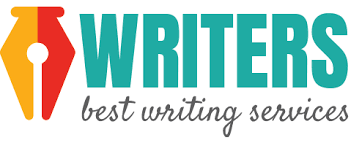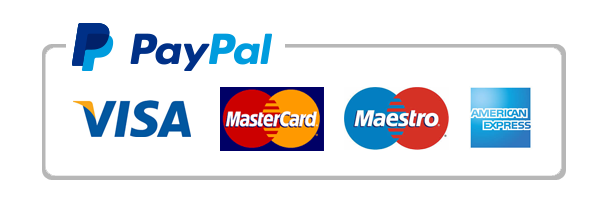Identify two (2) issues from the list of top issues
Identify two (2) issues from the list of top issues
Discussion Question 2
Using metrics to assess organizational/program efficiency and effectiveness
According to McLaughlin and Olson (2012), “a key component of effective operations is the ability to move strategy to action” (pg. 13). Once a health care organization has a strategy, it is then necessary to select the accurate assessment tool to implement the strategy. Balance scorecards, strategy maps, and dashboards are three organizational assessment tools that are used frequently to move a strategy into action.
1. Read the article, The balanced scorecard, strategy maps and dashboards: Why are they different? at the following link: http://www.cgma.org/magazine/2013/jul/20138186.html
2. Identify two (2) issues from the list of top issues confronting hospitals in 2016 published by the America College of Healthcare Executives ( https://www.ache.org/pubs/research/ceoissues.cfm )
3. Then choose one (1) tool (balanced scorecard, strategy maps, or dashboards) per selected issue and discuss (from a health care manager perspective) how you would use that tool to minimize the selected issue.
McLaughlin, D. B., & Olson, J. R. (2012). Healthcare operations management (2nd ed.). Chicago, IL: Health Administration Press.
American College of Healthcare Executives. (2016). Top issues confronting hospitals in 2016. Retrieved from https://www.ache.org/pubs/research/ceoissues.cfm
Bayliss, J., Chin, G. & Pfingsten, M. (2016). Types of traditional organizational designs: Simple, functional & divisional designs. Retrieved from https://study.com/academy/lesson/types-of-organizational-structures-functional-divisional-matrix-team-network.html
Cokins, G. (2013). The balanced scorecard, strategy maps and dashboards: Why are they different? Retrieved from http://www.cgma.org/magazine/2013/jul/20138186.html
Health Research & Educational Trust. (2014). Building a leadership team for the health care organization of the future. Retrieved from http://www.hpoe.org/Reports-HPOE/leadership-team-future-2014.pdf
Griner, P. (2017). Case study: On being transparent. Retrieved from http://www.ihi.org/education/IHIOpenSchool/resources/Documents/Participant_On%20Being%20Transparent.pdf
Kash, B. A., Spaulding, A., Johnson, C. E., & Gamm, L. (2013). Success factors for strategic change initiatives: a qualitative study of healthcare administrators’ perspectives. Journal of Healthcare Management, 59(1), 65-81. doi: 10.1097/HMR.0b013e318276faf8
Nagy, J. (2016). Section 1. Organizational structure: An overview. Retrieved from http://ctb.ku.edu/en/table-of-contents/structure/organizational-structure/overview/main
Schyve, P. M. (2009). Leadership in healthcare organizations: A guide to joint commission leadership standards. Retrieved from https://www.jointcommission.org/assets/1/18/WP_Leadership_Standards.pdf
Werberg, D. (2010). Transformational leadership and staff retention: An evidence review with implications for healthcare systems. 34(3), 246-258. doi: 10.1097/NAQ.0b013e3181e70298
Wyatt, J. (2004). Scorecards, dashboards, and KPIs keys to integrated performance measurement: to effectively measure performance, providers need more than just a balanced scorecard; they also must be able to access performance data from a central data warehouse. Healthcare Financial Management. 58(2), 76-80.
Discussion Question 3
Leadership: Power, Authority, and Influence
Power, authority, and influence are three terms that are actively seen in the role of leadership. The correct balance of the three is vital to being an effective health care leader. Research and identify the differences among power, authority, and influence. Explain, using examples, how misapplication of power, authority, and influence could lead to damaging consequences as a health care leader.
Be sure to cite the literature in your response.Abdulaziz, A. (2013). Leadership of healthcare professionals: Where do we stand? Oman Medical Journal, 28(4), 285-287. doi: 10.5001/omj.2013.79Allen, G. (1999). Supervision. Ronjon Publishing, Inc.: Denton, TX.Evans, J. (2014). HERD: Evolving leadership in healthcare design. Health Environments Research & Design Journal, 7(4) 9-12. doi:10.1177/193758671400700402Goleman, D. & Boyzatzis, R. E. (2008). Social intelligence and the biology of leadership. Retrieved from https://hbr.org/2008/09/social-intelligence-and-the-biology-of-leadershipJohnson, L. K. (2008). Exerting influence without authority. Retrieved from https://hbr.org/2008/02/exerting-influence-without-aut.htmlKumar, R. D. C. & Khiljee, N. (2016). Leadership in healthcare. Anaesthesia and Intensive Care Medicine, 17(1), 63-65. doi:10.1016/j.mpaic.2015.10.012Ladyshewsky, R. K. (2010). The manager as coach as a driver of organizational development. Leadership & Organization Development Journal, 31(4), 292-306. doi: 10.1108/01437731011043320Maner, J. K. & Case, C. R. (2013). The essential tension between leadership and power: Why power corrupts – and how to prevent it. Retrieved from http://www.apa.org/science/about/psa/2013/10/leadership-power.aspxNayar, V. (2013). Three differences between managers and leaders. Retrieved from https://hbr.org/2013/08/tests-of-a-leadership-transitiOlivo, T. (2014). The profile of an effective healthcare leader. Retrieved from http://www.beckershospitalreview.com/hospital-management-administration/the-profile-of-an-effective-healthcare-leader.htmlOliver, S. (2006). Leadership in healthcare. Retrieved from http://www.dphu.org/uploads/attachements/books/books_5511_0.pdfStefl, M. E. (2008). Common competencies for all healthcare managers: The healthcare leadership alliance model. Journal of Healthcare Management, 53(6), 360-374.
Discussion Question 4
Reducing Hospital-Acquired Infections
Assume you are recently hired as the department manager for the surgical unit at a 300-bed acute care hospital. There has been an ongoing problem with hospital-acquired infections in the surgical unit. The hospital does not get paid for treating these infections and it is extremely costly. As a result, the prior manager was terminated. Describe your approach from both an operations and quality perspective in addressing the problem. What would you do first? What tactics would you use? Who would you get involved? Develop critical thinking around the urgent problem.
Be sure to cite reliable sources to support your response.American Academy of Family Physicians. (2017). Basics of quality improvement. Retrieved from http://www.aafp.org/practice-management/improvement/basics.htmlAHRQ. (2002). Improving health care quality. Retrieved from https://archive.ahrq.gov/research/findings/factsheets/errors-safety/improving-quality/improving-health-care-quality.pdfEvans, M. (2017). Dr. Mike Evans video: An illustrated look at quality improvement in health care. Retrieved from http://www.ihi.org/resources/Pages/AudioandVideo/MikeEvansVideoQIHealthCare.aspxFields, R. (2011). 5 common hospital problems – and suggestions for how to fix them. Retrieved from http://www.beckershospitalreview.com/hospital-management-administration/5-common-hospital-problems-and-suggestions-for-how-to-fix-them.htmlIOM. (2001). Crossing the quality chasm: A new health system for the 21st century. Retrieved from http://www.nationalacademies.org/hmd/~/media/Files/Report%20Files/2001/Crossing-the-Quality-Chasm/Quality%20Chasm%202001%20%20report%20brief.pdfJames, B. C. (1989). Quality management for health care delivery. Retrieved from https://www.ghdonline.org/uploads/QMMP.pdfJones, E., Hartley, C., & Roberts, W. (n.d.). The definition of health care operations. Retrieved from http://www.hipaa.com/the-definition-of-health-care-operations/Joshi, M., Ransom, E. R., Nash, D. B., & Ransom, S. B. (2014). The healthcare quality book: Vision, strategy, and tools. Chicago, Illinois: Health Administration Press.McLaughlin, D. B., & Hays, J. M. (2008). Chapter 1: The challenge and the opportunity. Healthcare operations management. Chicago: Health Administration Press.
"You need a similar assignment done from scratch? Our qualified writers will help you with a guaranteed AI-free & plagiarism-free A+ quality paper, Confidentiality, Timely delivery & Livechat/phone Support.
Discount Code: CIPD30
WHATSAPP CHAT: +1 (781) 253-4162
Click ORDER NOW..


